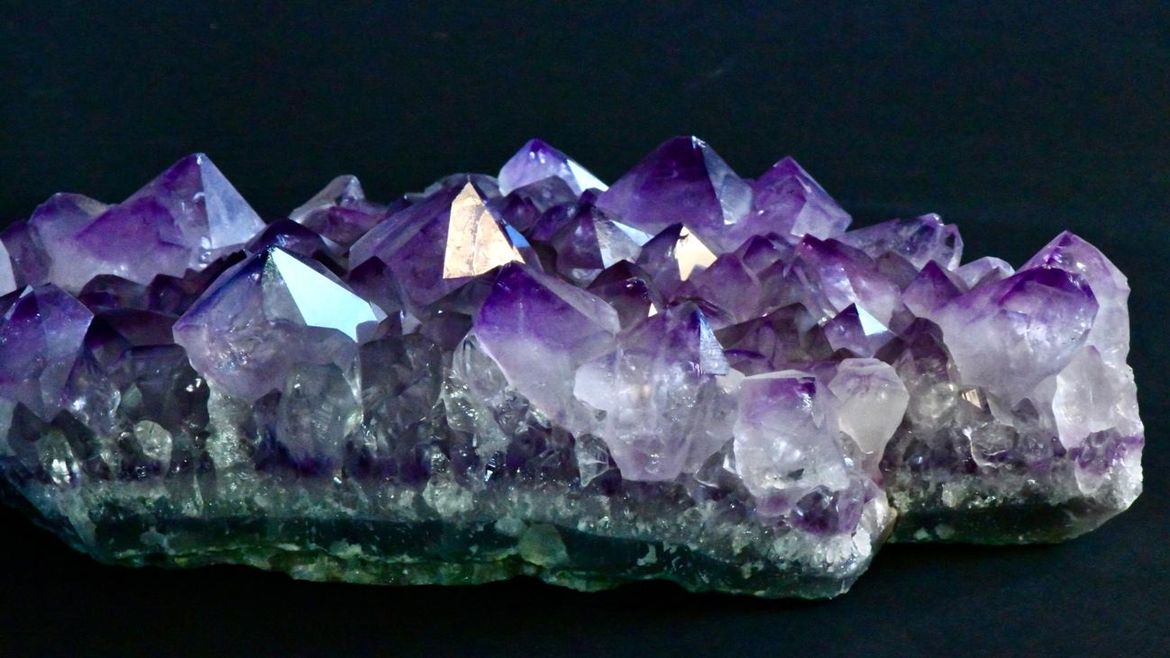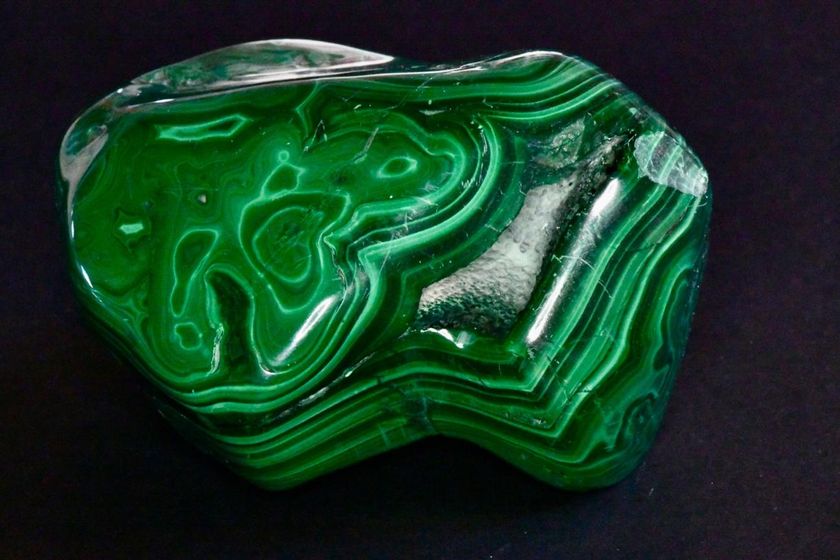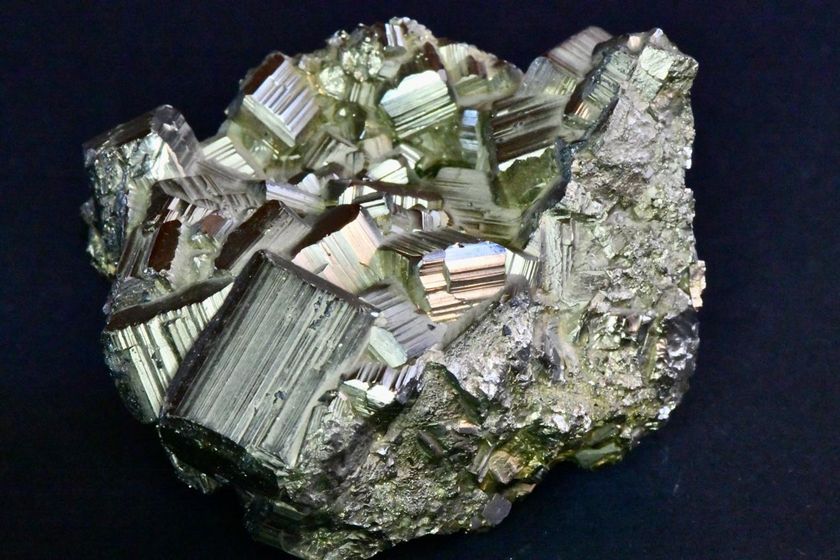This abundance of minerals – almost 5,000 different types of minerals on the planet earth – may well be unique in the cosmos.
 Quartz is not only a terrestrial rock-forming mineral but also crystallises to form gems, such as this amethyst in the image. / Photo: Antonio Cruz.
Quartz is not only a terrestrial rock-forming mineral but also crystallises to form gems, such as this amethyst in the image. / Photo: Antonio Cruz.
Something that seems to make our blue planet special and unique is the vast range of minerals that it contains compared with other planets.
For almost a decade the American geologist Robert Hazen, together with other colleagues at the Carnegie Institute in Washington, have been publishing articles on this subject [1], highlighting the fact that this abundance of minerals – almost 5,000 different types of minerals on the planet earth – may well be unique in the cosmos.
It is believed that when the solar system was formed, there were only a dozen minerals, whereas now there are some five thousand different types. How did this diversity come about?
From an evolutionary perspective, the authors suggest that this abundance of minerals might be linked directly or indirectly to biological activity on our planet. That is to say, they could be the product of microbial action. It is speculated that bacteria might have appeared first, along with single-cell organisms, and that different minerals emerged later as a result of substances produced by these microbes.

[photo_footer] Malachite is a mineral formed by copper carbonate that gives it its beautiful greenish colour and its characteristic silky lustre. It is used to make decorative objects / Photo: Antonio Cruz. [/photo_footer] Thus these authors link biological evolution to another putative, geological, evolution, whereby the products of natural selection and random mutation, characteristic of living organisms, were transferred to the inorganic sphere or minerals. (But how can minerals mutate if they lack DNA? How would natural selection operate, if there is no reproduction?)
Finally, they reach the conclusion that in both cases, organic and inorganic, the evolutionary processes involved were entirely random, and that, as was also suggested by Stephen Jay Gould, if the evolutionary story could be rewound and started again, both minerals and living organisms would be very different from what they are now. Hence, Hazen and his team believe that this diversity of minerals must necessarily be unique and exclusive to the planet earth.
However, from the perspective of intelligent design and belief in an all-wise Creator it is also possible to arrive at the conclusion that the uniqueness of this abundance of minerals on our planet has a very different cause. In fact, it is intriguing that life on Earth depends on a distribution of minerals which was not in any way intended to support it. It is astonishing that all the vital chemical and mineral elements were located close to the surface of the earth’s crust, precisely where living organisms required them to be.
Perhaps it is not so surprising to find abundant supplies of coal, hydrogen, nitrogen and oxygen, but living organisms also need other not so abundant minerals, such as magnesium, calcium, selenium, sulphur, phosphorus, potassium, chlorine, etc. And all these minerals can also be found near the surface of the lithosphere, as if they had been placed there to meet the needs of the living organisms. How are minerals formed?

[photo_footer] Pyrite consists of iron sulphide and crystallises in the form of cubes. It is commonly known as "cat's gold". / Photo: Antonio Cruz. [/photo_footer] The Earth’s tectonic plates construct the continents and form deposits of minerals that are crucial for life and human civilisation. This occurs because heat from the earth’s core is transferred to the mantle, and generates convection currents which are continuously forming and moving the continents.
During certain stages of these natural processes, and in certain locations, the minerals that are essential to life are generated so that everything works adequately. It is difficult to attribute this to chance, or to conclude that these is no prior, purposeful design.
1. Hazen, R. et al., 2015, Statistical analysis of mineral diversity and distribution: Earth's mineralogy is unique, Earth and Planetary Sciences Letters, 426; DOI:10.1016/j.epsl.2015.06.028

Las opiniones vertidas por nuestros colaboradores se realizan a nivel personal, pudiendo coincidir o no con la postura de la dirección de Protestante Digital.
Si quieres comentar o